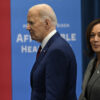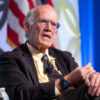If you are looking for information on how Americans are engaging with the Affordable Care Act, the Census Bureau’s recently released latest annual estimates of health insurance coverage is probably not the place to look—at least for now.
The Census Bureau, which derives its information on healthcare from the Annual Social and Economic Supplement—the same survey where it asks how many toilets, computers, microwaves, etc., people have in their homes—does provide some useful insights.
It catalogues the demographic characteristics of the population based on participation in different types of health insurance coverage—government health care programs, private employer and individual plans, and the uninsured. It tells us young adults make up a disproportionate share of the uninsured and provides useful information on the relative availability of employer-sponsored coverage by industry and firm size.
But its hard numbers on enrollment and enrollment trends are not reliable for drawing “big picture” conclusions, especially regarding the ACA. Indeed, that unreliability is why this year the Census Bureau started using a new set of health coverage questions in the ASEC.
The redesigned questionnaire itself is one reason to be careful in drawing conclusions from this latest data. Census itself notes “the redesign of the health insurance section of the CPS ASEC, its estimates of health insurance coverage are not directly comparable to estimates from prior years of the survey.”
Even with revisions in its methodology, the ASEC is still a survey and not a comprehensive accounting of actual enrollments. Although the new version of the ASEC aims to be more accurate, surveys never can be as precise as real-world data. For instance, based on this survey Census estimates Medicare covered 49 million people in 2013. Yet, actual Medicare enrollment in 2013 was 52.2 million individuals.
Also, the survey is conducted in March and is designed to gather information about health insurance coverage the previous year. Consequently, it reflects the reality of 2013. But Obamacare changed dramatically in 2014, which means this survey doesn’t reflect enrollment in the new health insurance exchanges, expansion of Medicaid in half the states or changes in employment-based coverage as a result of businesses and workers responding to new incentives and disincentives in Obamacare.
With respect to the last point, it is important to rely on actual enrollment data—as opposed to surveys—when assessing Obama’s impact on health coverage. This is particularly important for its effects on private market coverage.
For instance, my colleague, Drew Gonshorowski, and I recently published a paper that analyzed enrollment data for private health insurance for the six-month period from last Oct. 1 to Mar. 31 of this year. Despite media reports of gains in enrollment of as many as 4 million people, we found a net increase of just 520,000 people with private insurance during that time after accounting for reduced enrollment in employer-sponsored group coverage.

































